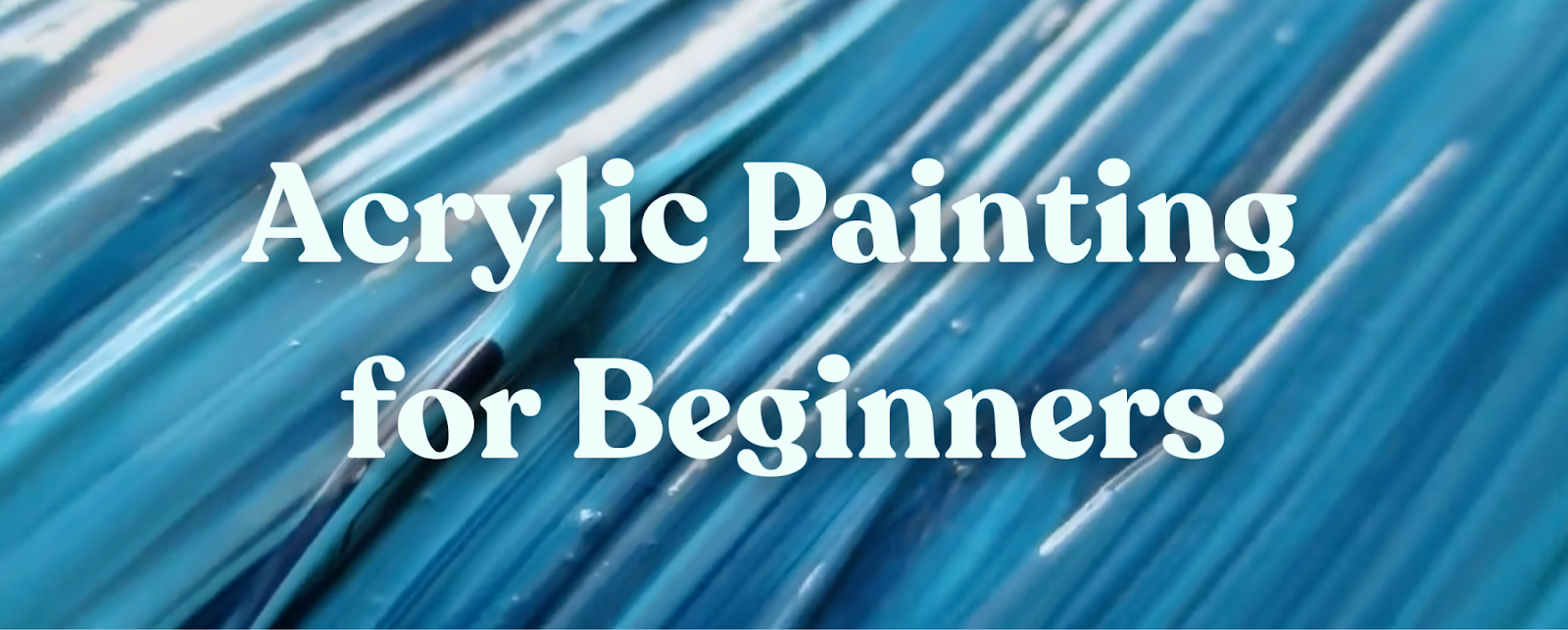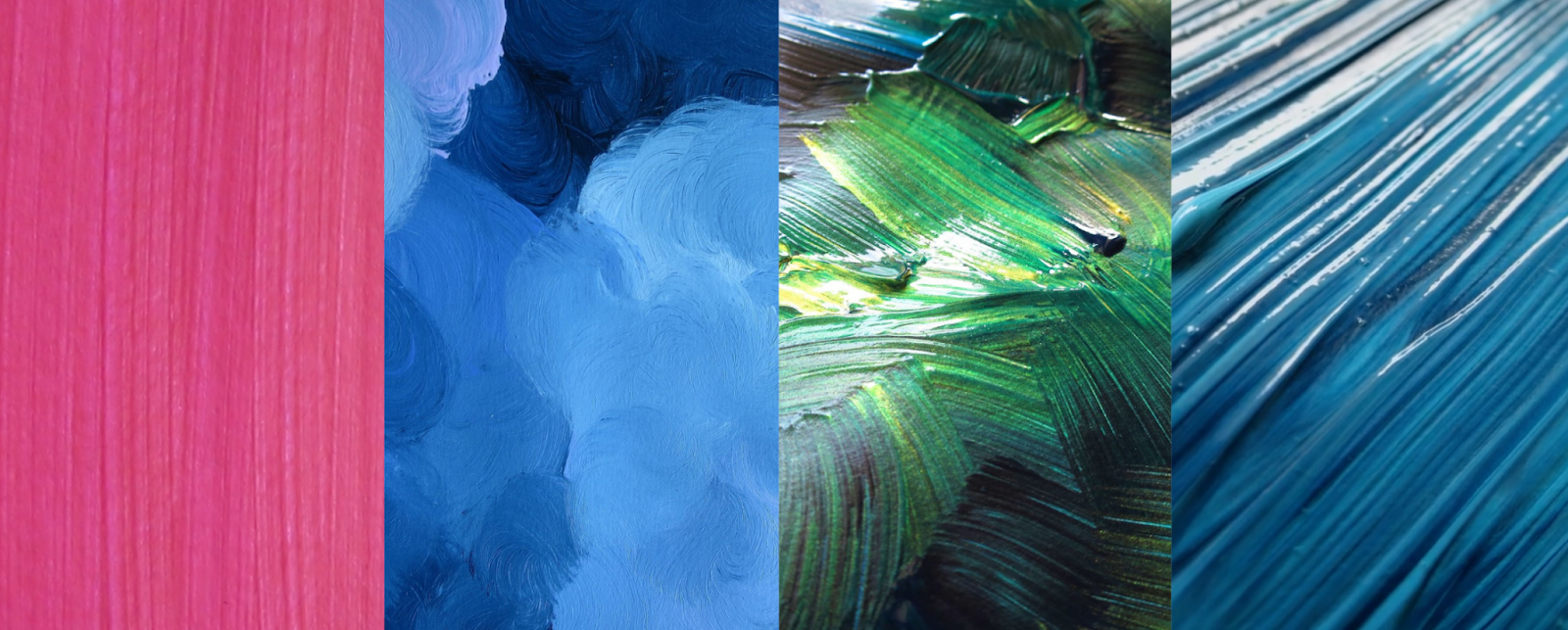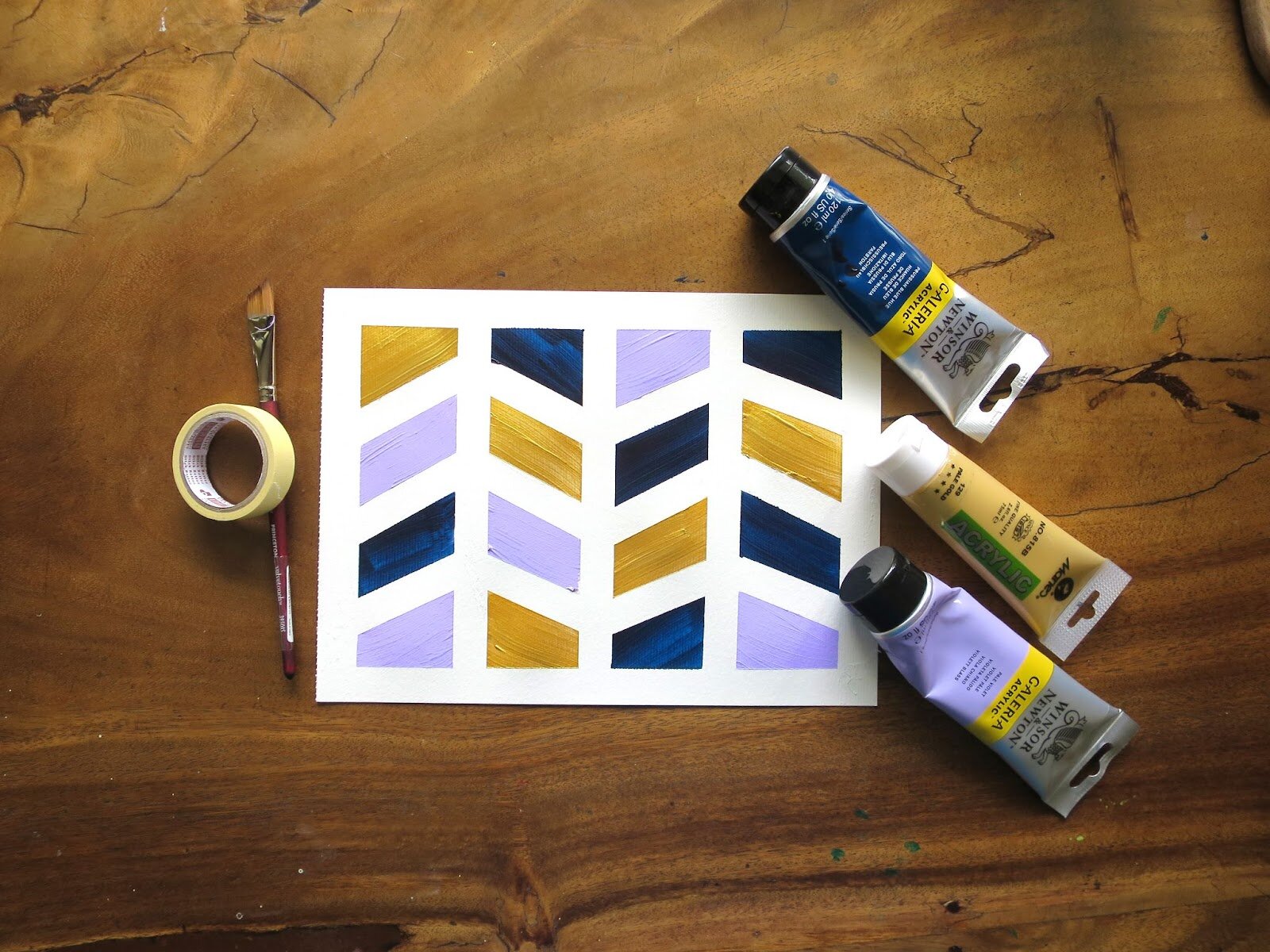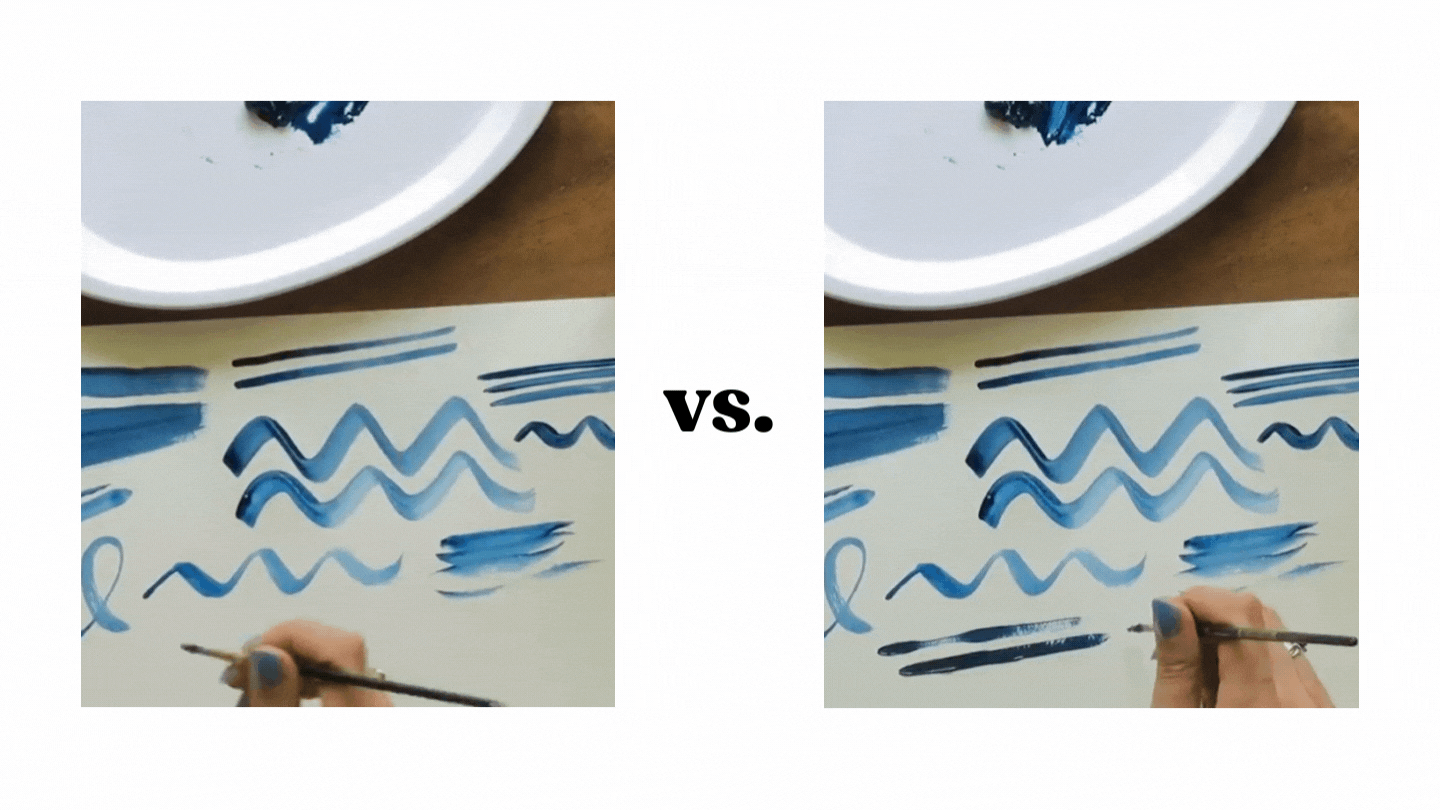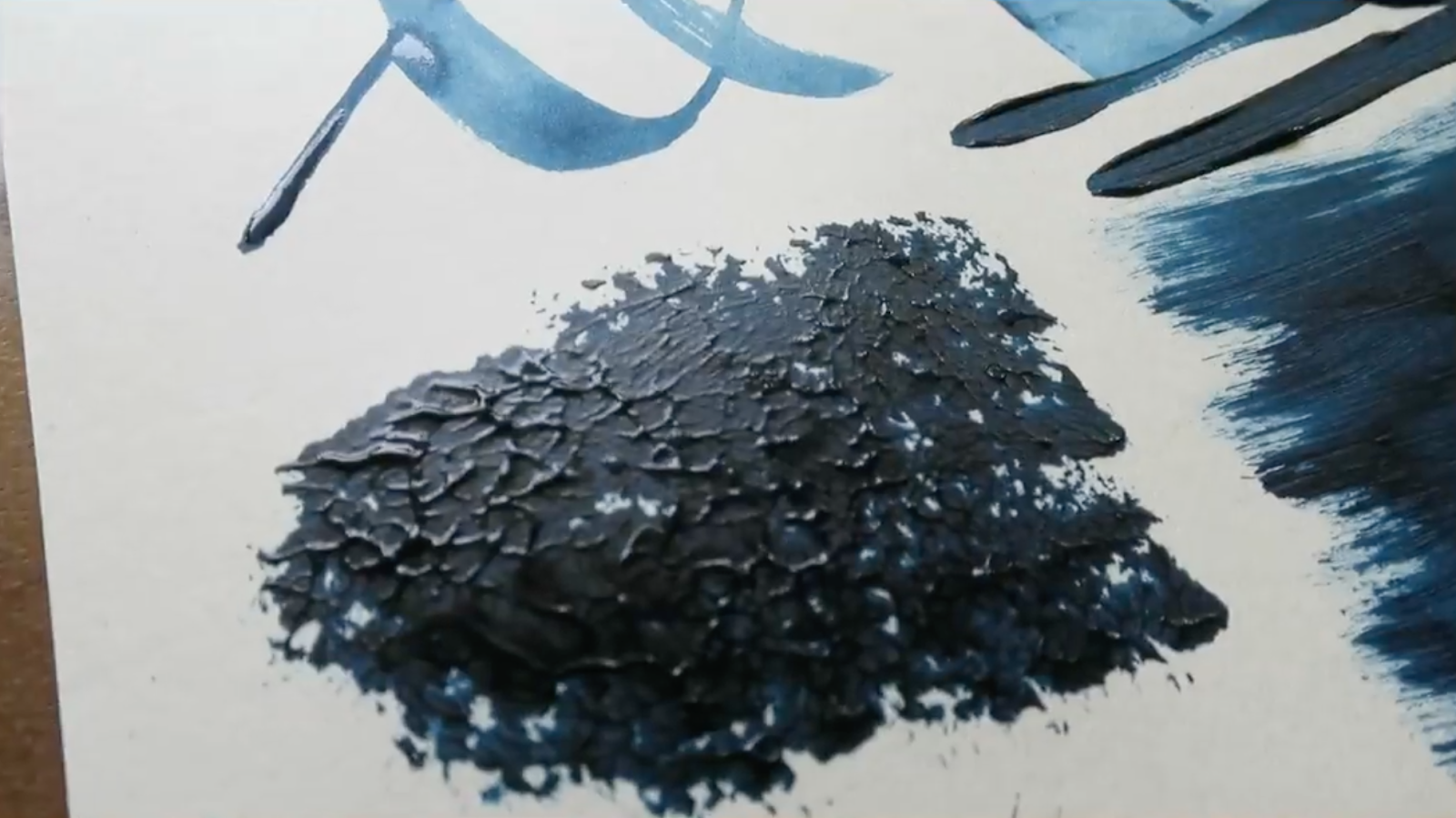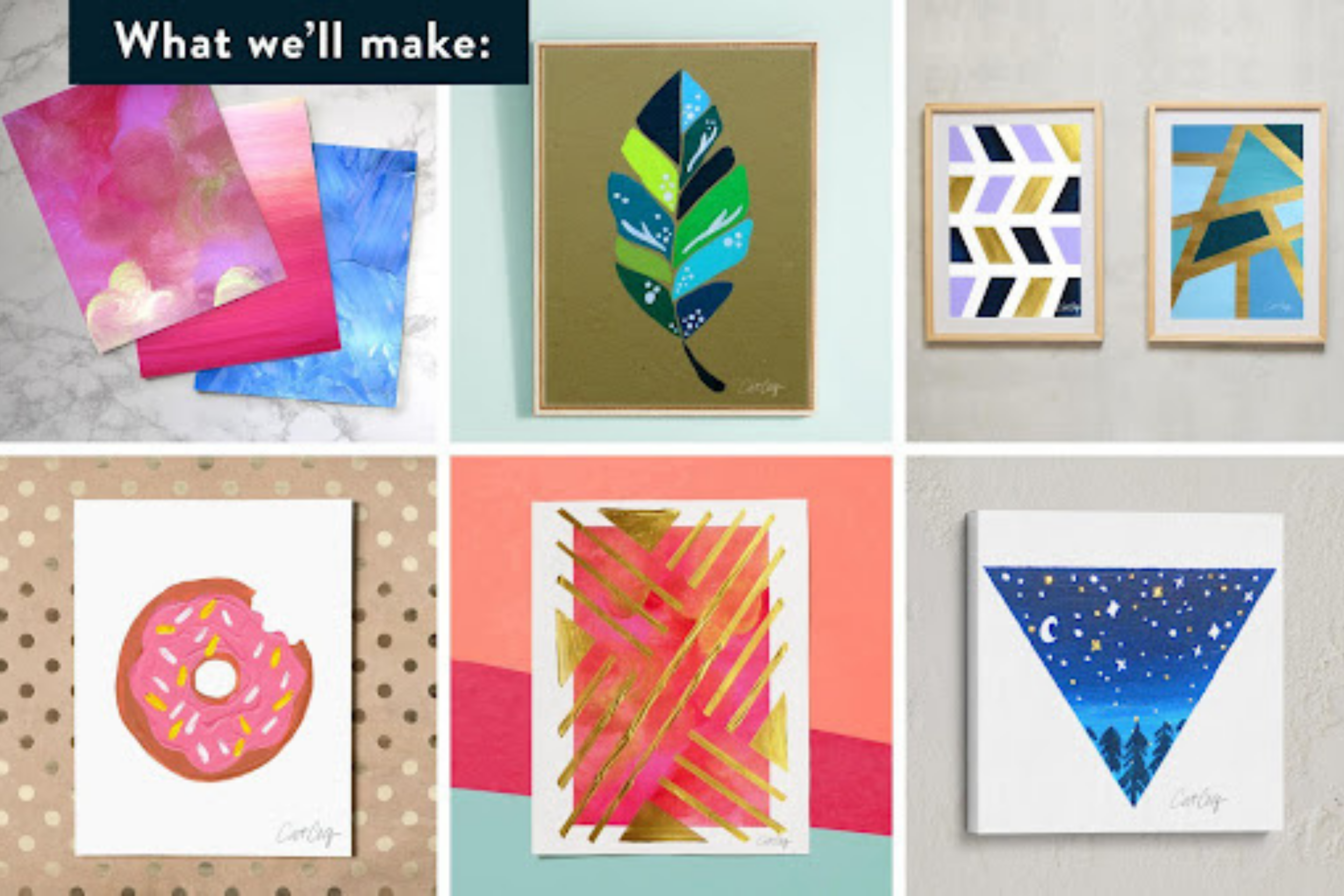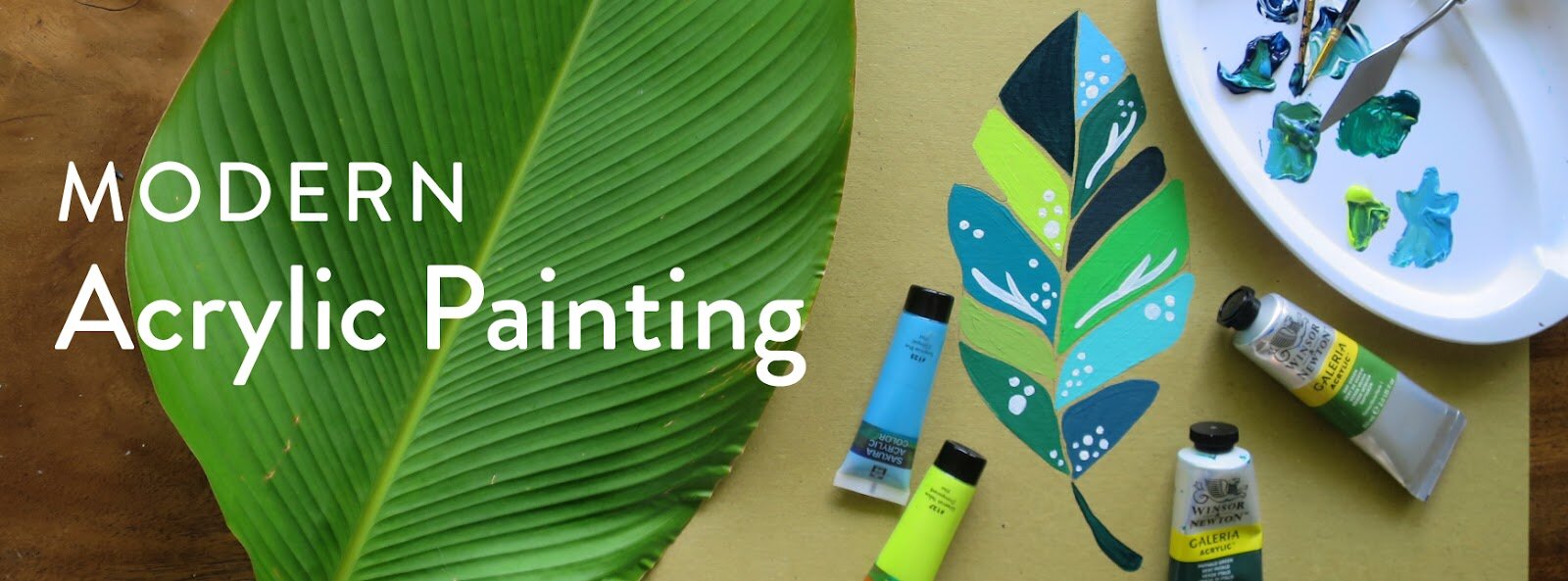Acrylic Painting for Beginners
In this acrylic painting for beginners tutorial, I'm sharing my top acrylic painting techniques. Whether you want to learn acrylic painting on canvas, or simply want to learn a new paint medium, this will walk you step-by-step through everything you need to get started with acrylic paint.
The Basics of Acrylic Paint
Acrylic paint is a fast-drying paint made of pigment suspended in acrylic polymer emulsion. Basically, what that means is that it's water-soluble while it's wet. When the paint dries, however, it's completely water-resistant.
Acrylics are an amazing paint medium for beginners. They are affordable and accessible. Even with the cheapest tubes of paint out there, you can achieve stunning results. Acrylic paint supplies are also really easy to maintain. All you need to have to clean your acrylic brushes is soap and water!
I love using acrylics because they are great for achieving a really modern aesthetic with your artwork. Here are some examples of acrylic paintings in my portfolio.
Acrylic paint is extremely versatile. Depending on the kind of brush you use, the surface you paint on, or how much water you add, you can achieve a wide range of different textures and techniques with acrylic paint. You're also able to paint on a wide range of surfaces like canvas, wood, paper, glass, fabric, and more.
As you can tell, acrylic paint is a great medium for beginners. Chances are, you've probably experienced painting with some kind of acrylic paint as a kid. Consider this tutorial picking up where you last left off with acrylic paint. But today, we're going to take it to the next level!
Acrylic Paint Supply Recommendations
The basic supplies you'll need for painting with acrylics are brushes, paint, and a painting surface.
My favorite acrylic paint supplies:
Paint:
This set of acrylic paints gives you a wide range of colors to work with and is a great set to start out with.
I love buying high-quality paint in the primary colors (red, yellow, and blue) and white. This gives me the ability to mix them into any color I choose! I love these acrylics from Winsor and Newton.
Brushes:
Painting Surface:
When I’m painting with acrylics, I like using Strathmore Mixed Media paper. This pack is a 400 series, which means the paper is very thick. This is perfect for loading lots of acrylic onto the page without too much paper buckling.
If I want to give my acrylic paintings a little more oomph, I’ll paint on canvas. I like this 18-pack of canvas boards for two main reasons: 1) There are a variety of sizes, so you have more flexibility with how large/small you want to paint. 2) For 18 canvases, this is pretty dang cheap.
If these exact supplies aren't accessible to you, no problem! As I mentioned above, acrylic paints are really versatile, and you can't go wrong with any particular brand of supplies. If you're an acrylic painting beginner, feel free to use whatever supplies are easiest for you to find.
Basic Acrylic Painting Techniques
In this acrylic paint tutorial, I'm going to share the basic techniques you need to get started with acrylic paints. We touched on the supplies you need for acrylics and next, we'll go into how to mix acrylic paint colors and learn different brush strokes to practice.
If you want a full step-by-step tutorial of how to paint with acrylics, check out my class, Modern Acrylic Painting. In this class, you'll learn how to paint different motifs and will leave with a stack of completed paintings and tons of acrylic painting ideas.
And the best part? You can watch the class for free when you sign up for a free trial with Skillshare.
Color Mixing
Mixing acrylic paint is an easy skill to learn, but will have a huge impact on your acrylic paintings. One of the reasons that I love to mix acrylic paint instead of using paint straight out of the tube is that the pre-mixed paint can be very limiting. The only colors you'll be able to paint with are the tubes that you actually purchase. But if you learn some basic color mixing techniques, you can turn a few flat colors into any color you like!
The other reason to learn how to mix acrylics is that paint out the tube isn't very interesting. The colors can look flat and expected, but learning to mix colors will help you add more tonality to the colors you're painting with. This elevates your paintings and helps them stand out from the crowd.
In this tutorial, I'll walk you through my favorite mixing techniques to help you get started with your acrylic paints. And - bonus - you only need four paint colors to follow along. The primary colors (red, yellow, and blue) and white!
Mixing Secondary Colors
Let's start with the basics. By mixing the three primary colors - red, blue, and yellow - you can create any color of the rainbow.
Mixing red and blue makes purple
Mixing red and yellow makes orange
And mixing yellow and blue makes green
Play with the ratio of each color and you'll see how the secondary color changes. For example, if you want a more lime green color, keep adding yellow to the blue and yellow mixture. This will modify your green color and create a more lime green shade. You can further modify these new secondary colors that you've created by adding a little bit of white. This will create a more pastel palette like this.
Mixing Black
If you've taken any of my Skillshare classes, you know that I'm not a fan of using straight black paint. I find that it's just not very interesting and can look dull. My favorite way to combat this in my paintings is to create my own black paint! To create black, all you have to do is mix two complementary colors together. On the color wheel, complementary colors are the ones directly opposite of each other.
My favorite way to mix black with acrylics is to mix red and green paint together. Here's an example of how red and green mix together to make black. The black has some beautiful undertones and it is much more dynamic than black straight out of the tube.
These are just two basic color mixing techniques to get started with, but I encourage you to play around and let your imagination run wild when you're mixing colors. It's a really fun way to get to know your acrylics and a hands-on way to learn color theory! If you want to learn more about color mixing for acrylics join me for the full breakdown in my class, Modern Acrylic Painting.
Brush Control Techniques with Acrylic Paint
The next step to getting started with acrylic paint is to get comfortable with your brushes. I'll walk you through some basic brush control techniques to practice and by the end, you'll have a good idea of how to use the different types and sizes of brushes used for painting acrylics.
Don't worry if your strokes aren't perfect, this is all about having fun and getting comfortable with your brushes!
Before we dive into each different brush type, I wanted to share one of my top acrylic paint tips with you. To get more control with acrylic paint, add water to your brush.
This might surprise you since acrylic paint is totally different than watercolor. But one of the benefits of acrylic paint is that it's water-soluble. This means that you're able to mix water in while the paint is wet and it won't change the structure of the paint too much.
By adding water, you'll have more control over the smoothness of your strokes. If you use acrylic paint and a dry brush, you're more likely to get uneven globs of paint in your strokes like this.
Now let's move into the different brush strokes and types of brushes for acrylic paint.
Angular Brush Techniques
The benefit of using an angled brush is that you're able to use the fine point of the brush to make more detailed strokes on the page, and you can also use the thick end to make large thicker strokes.
For your first practice strokes, use the angled edge of the brush to create thick, even lines on your page. Make sure your brush is evenly coated with pigment. If you find that your paint is looking blotchy or uneven, add more water.
Next, you can practice using the fine point of your angled brush to create thin even lines on the page.
Lastly, you can practice using both the angled side of the brush and the fine tip by creating wavy lines on your page. This technique is only possible with an angled brush, and it is a great one to practice!
Round Brush Techniques
Next, we'll practice using a round brush. I use round brushes when I'm painting details or want my lines to be precise. Experiment with the pressure you are using with the round brush. Use a lighter pressure for thin lines and a heavier pressure for thicker lines.
Thick Brush Techniques
The last brush I recommend practicing with is a large brush with thick bristles. These types of brushes are great for achieving texture that you can only get with acrylic paint. I love when you're able to see the textured bristles come through on the page. Different brush techniques will give you different textures. Here are a few you can try:
Practice dabbing your brush on the page to get textures like this.
To get a painterly brushstroke look, practice using a dry brush and painting even dry strokes on the page.
There is so much room for flexibility and creativity when it comes to acrylic paint. This is just a jumping-off point to give you the basics of acrylics. I hope this tutorial has empowered you to pick your acrylic paints up and get started! If you have any questions feel free to drop them in the comments below.
If you want to dive deep into the world of acrylic paint or if you want to learn how to paint specific motifs, I'd love for you to join me in my class, Modern Acrylic Painting. In this class, we explore ten separate acrylic styles and you'll finish the class with a stack of brand new paintings.
This class is for all levels. Whether you're an acrylic painting beginner or an experienced artist, you'll discover the joy of acrylic painting and learn how to infuse modern techniques into this easy-to-use medium.
You can enroll in the class for free when you sign up for a free trial with Skillshare. I hope to see you inside!

